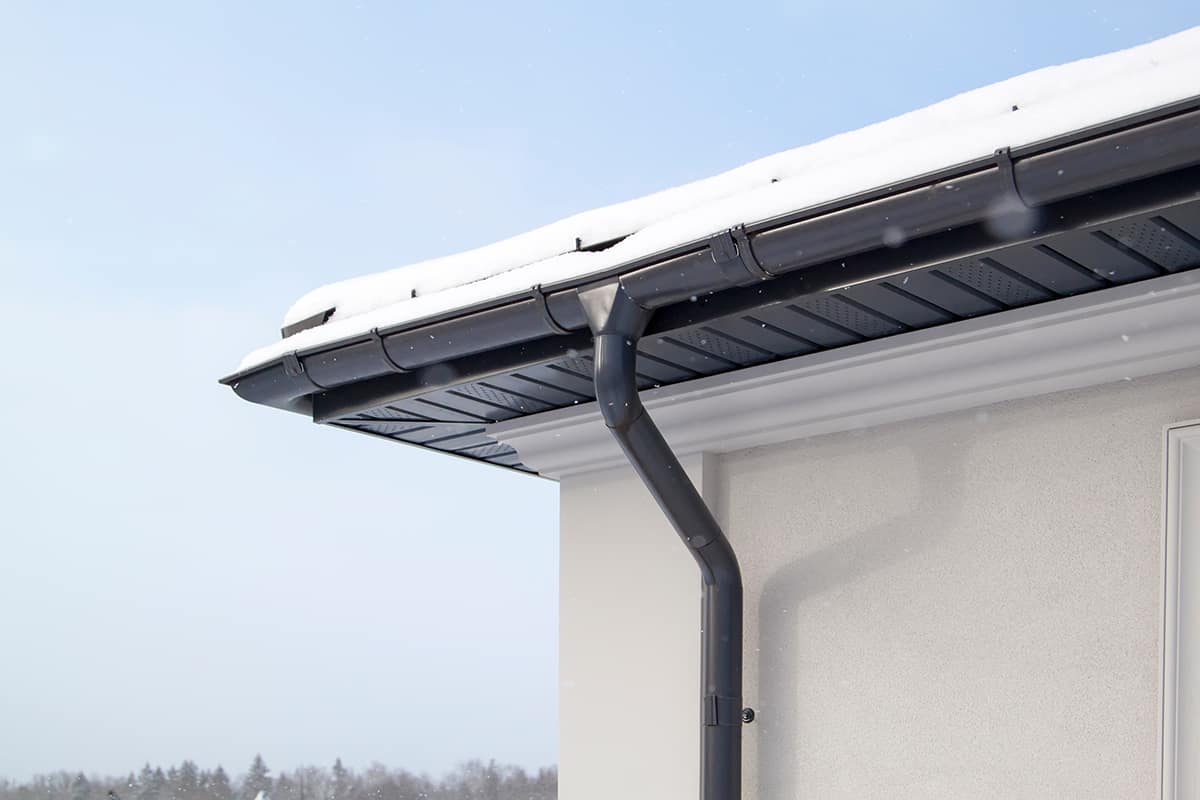Guttering is an essential part of any home’s construction, as it redirects rainfall away from the home’s foundations. Without gutters, this water would pool around the base of the exterior property walls and seep into the foundations to cause all kinds of damage.
The size of gutters you need is going to depend on the size and pitch of your roof. Generally speaking, the larger the roof, the more severe the pitch angle will be, and this means it can collect more rainwater at once. The greater amount of rainwater you have draining off your roof will require larger gutters so that they don’t overflow.
Here we will look at the most common gutter sizes and how you can determine which size of guttering is required for your home.
Replacing Gutters
If you are replacing gutters on your property, then you already have a template you can use to figure out what size you need, and this template is your current or old gutters.
To find the size of a gutter, measure from the front top edge of the gutter to the back top edge of the gutter. The most common size used on residential homes is 5 inches, but other sizes also come as standard.
After measuring the width of your gutters, you will know which size of guttering you need; however, you will also need to measure the length of guttering on your home so that you know how much you need to buy. The important thing to consider when replacing gutters is why they need replacing.
If they have simply come to the end of their life and always performed well, then you can use the measurements of your old gutters as a base for which new size of gutters you need. The same can be said if you are replacing gutters just to update the look and style of them.
However, if you are replacing gutters because the current ones did not do a sufficient job, for example, they were always flooding or collapsing under the weight of water pressure, then this is an indication that the gutters were not suitable for your home, and you should have the property-sized up for selecting a different size of gutters to your old ones.
New Gutters
If you are choosing a new gutter option on a brand new property, or you are replacing gutters because the old ones were not the right size to deal with the water runoff, then there is a relatively easy method you can use for determining which size of gutter you need.
First of all, you will need to find out the square foot size of the roof’s surface. This can be done by walking around your property with a tape measure. You will need to measure the width and length of your home from the outside, and then multiply these numbers together to get a square foot result.
For example, if the outside of your property measures 60 feet by 80 feet, then your calculation will be 60 x 80, which equals 4800 square feet. If your home is not a simple shape, you can draw a diagram breaking it up into smaller chunks and then add all of these numbers together.
Next, you need to determine the pitch of your roof. To do this, you will need a tape measure or ruler and a spirit level. The spirit level will need to be a minimum of 12 inches long. You will need to access your roof using a ladder, making sure it is secure and steady for you to climb up on with your tools.
Hold your spirit level at a horizontal angle with the tip of one end touching the sloping part of the roof. Keeping it steady, measure 12 inches from the tip of the level touching the roof, out toward the opposite end of the level.
When you hit the 12-inch mark, take a tape measure and measure the distance between the 12-inch mark on your level and the roof beneath it. This is the pitch measurement you will need for working out the gutter size.
Now you need to take the square foot number from your original calculation, which in our example was 4800 square feet. That number now needs to be multiplied by another number as determined by your roof pitch. If your roof pitch was between 0 and 3 then you don’t need to multiply. If your roof pitch was between 4 and 5 inches, multiply by 1.05.
If your roof pitch was between 6 and 8 inches, multiply by 1.1. If your roof pitch was between 9 and 11 inches, multiply by 1.2. If your roof pitch was over 13 inches, multiply by 1.3. For our example, we will use a roof pitch of 9. This means we need to multiply our square footage number of 4800 by 1.2, which gives us the final figure of 5760.
Assess your final number against the recommendations for gutter sizes. If your result is less than 5500, then you will be able to use the smaller size of gutter, which is 4 inches. You can also use a larger gutter size if you wish, and if you feel it looks proportional with your property, but 4 inches is the minimum.
If your final number is between 5500 and 7500, then you need the most common size of gutter, which is 5 inches. Again, a larger gutter can be used, but 5 inches should be the minimum. If your final number is over 7500, then you will need the largest size of gutter commonly available, which is 6 inches. In some instances, 7-inch guttering is also available, but this is much less common.
Having figured out the width size of gutters you need, you should use the perimeter measurement of your home to determine how long your gutters will need to be and, therefore, what lengths you need to buy.






